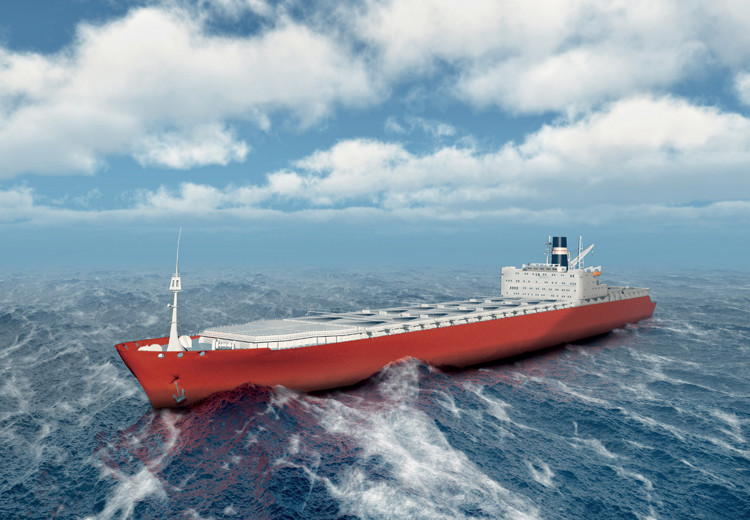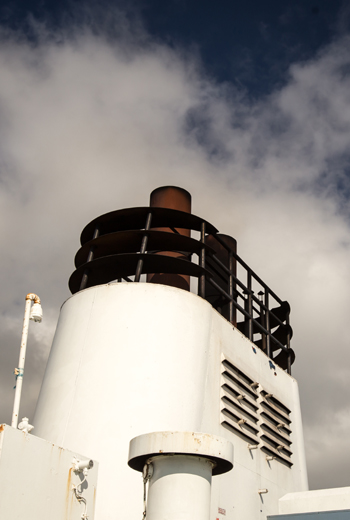Fuels
Fuel additive sea trials
08 July 2025
04 December 2018
Ban on carriage of non-compliant fuels and actions on greenhouse gas emissions approved

At MEPC 73, the Marine Environmental Protection Committee approved measures to support the implementation of the IMO’s 0.50% limit on sulphur in fuel oil used on board ships from January 1 2020, and its strategy to reduce greenhouse gas emissions in the future. Insight reports on the changes and looks at the potential impacts on fuels and lubricants.
With the low sulphur clock ticking away fast for the marine industry, the International Maritime Organization (IMO) has recently reaffirmed the required low sulphur implementation deadline of January 1 2020. In addition, the Organization has approved an amendment to its MARPOL treaty, which prohibits the carriage of non-compliant fuel oil (>0.50% S), for combustion purposes, for propulsion or operation on board ship - unless it is fitted with an exhaust gas cleaning system. Expected to enter into force in March 2020, just two months after the 0.50% sulphur cap becomes effective, IMO says the amendment is designed to help ensure consistent implementation and compliance and to provide a means for effective enforcement.
Currently, the maximum sulphur limit in fuel oil for use in ships is 3.50% globally and 0.10 % in the four ECAs: the Baltic Sea area; the North Sea area; the North American area; and the United States Caribbean Sea area.
To meet the 0.50% sulphur limit, most ships are expected to use new blends of fuel oil and the IMO has produced approved guidance to assist ship operators and owners to plan ahead for the 2020 limit.
MEPC has also approved guidance on best practice for fuel oil suppliers. IMO says this is intended to assist fuel oil purchasers and users in assuring the quality of fuel oil delivered to and used on board ships, with respect to both compliance with the MARPOL requirements and the safe and efficient operation of the ship. The guidance pertains to aspects of the fuel oil purchase up to the loading of the fuel oil on board ship.
Looking ahead to the implementation phase, MEPC has invited proposals on ways to enhance the implementation of regulation 18 MARPOL Annex VI, which covers fuel oil quality and availability. In addition, parties to the regulation must inform the IMO of the availability of compliant fuel oils in ports and terminals and notify the Organization when a ship has presented evidence of the unavailability of compliant fuel oil.
IMO says the 1 January 2020 implementation date for the low sulphur cap was adopted in 2008 and confirmed in October 2016, giving certainty to refining, bunkering and shipping sectors. Despite some calls for a ‘soft launch’, IMO reinforced that certainty by remaining committed to these previously agreed timelines.
 Shippers must choose between marine gas oils, low sulphur
Shippers must choose between marine gas oils, low sulphur However, despite these assurances, it is clearly a time of unprecedented change for those involved in shipping and bunkering. And, right now, the impending sulphur cap is the key focus of industry attention and a source of considerable anxiety.
One of the few safe bets is that we will enter a multi-fuel future, as shippers choose between marine gas oils, low sulphur fuels, heavy fuels oils plus scrubbers and liquid natural gas to comply.
It seems clear that 2019 will be a year of transition and that the fuels picture will continue to develop post 2020.
Some industry watchers suggest that 20-30% non-compliance could be expected in year one.
Key issues and unanswered questions that remain include the availability of conventional, LNG and other alternative fuels and what is in store for global fuel supply and fuel price trends. In addition there is some concern about the technical issues associated with the use of new fuels. In our view, as more low sulphur fuels are added to the bunker fuel market, there may be an increased need for fuel additives to ensure fuel stability is maintained while cold flow and handling issues are avoided.
Currently, the lion’s share of industry attention is directed towards fuels – although we must not lose sight of the fact that changes in fuel use also affect lubricant choice. What we are hearing here is a rising level of concern about the need to ensure sufficient hardware protection in a complex multi-fuel market.
Having explored the issues, we believe that our current lubricant products, approved for coverage across sulphur fuel levels, will meet the needs of two and four-stroke engines in most fuel supply scenarios. Nevertheless, marine diesel cylinder lubricant and trunk piston engine oil product developments are on going, as we continue to invest R&D budget in opportunities to further optimise lubricant oil offerings for future market needs.
The work to deliver the IMO initial strategy on reducing greenhouse gas (GHG) emissions from ships also moved forward at MEPC 73. A programme of follow-up actions, on the reduction of GHG emissions from ships up to 2023 was approved, which provides agreed timelines for specified streams of activity.
The initial strategy envisages a reduction in total annual GHG emissions from international shipping by at least 50% by 2050 compared to 2008.
It represents a framework for further action and refers to a range of candidate short, mid and long-term measures that will be considered by IMO. Proposals for candidate short-term measures have now been invited for consideration at the next Committee session in May 2019.
Two activities that will feed into the process towards the adoption of a revised GHG Strategy in 2023 are the collection of data on fuel oil consumption by ships over 5,000 gross tons, which begins on 1 January 2019; and a fourth IMO GHG study, to be initiated in the first half of 2019.
Although industry attention is currently well and truly focused on the best way to comply with the low sulphur cap, the need to cut GHG emissions is clearly the next big challenge looming on the not too distant horizon.
It is unclear at this stage if the marine sector will embrace lower viscosity oils, which can deliver fuel economy improvement, and with it CO2 emissions reduction, while also providing excellent hardware protection.
The introduction of these emissions regulations could herald a return in industry focus on slow steaming. For example, those vessels that opt to run on compliant fuels to meet the sulphur cap are likely to find that these fuels are more expensive than conventional heavy fuel oils. Slow steaming is probably the easiest and quickest way to reduce these additional fuel-related costs and thus improve vessel margins.
Then, to meet future CO2 emissions targets, shippers could replace older vessels with new, more fuel efficient ships with larger diameter propellers and ultra long stroke engines with lower than usual shaft speed – or again run their vessels slower.
However, in both the new generation of engines and those that are running slower than their optimum design speed engine temperatures are reduced, which means they can suffer from excessive liner wear through cold corrosion. Once the affected liner reaches the condemning limit it must be replaced and, although this repair bill is expensive, it is insignificant when compared to the lost opportunity cost of taking the ship out of service to undertake the work.
In our view, advanced cylinder oils with balanced formulations will be required to ensure sufficient engine protection is delivered if slow steaming becomes de rigueur.
These scenarios present real opportunities for formulators to ensure products deliver sufficient engine protection while also helping end users to take advantage of cost savings as they work to comply with regulatory targets.
With a unique combination of advanced fuel and lubricant additives and extensive technical expertise in the marine sector, Infineum is well placed to help overcome the challenges that may arise in this changing landscape.
Sign up to receive monthly updates via email